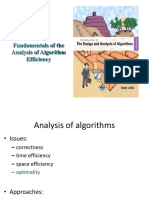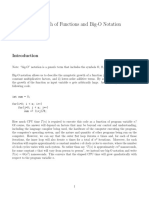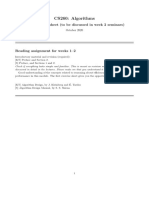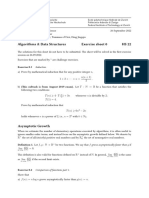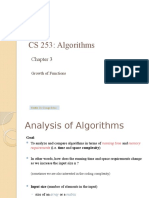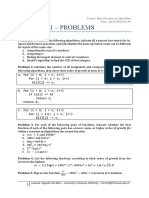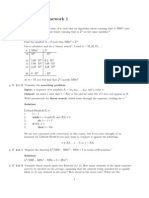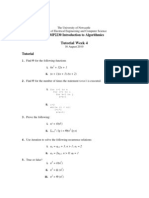0% found this document useful (0 votes)
7 views11 pagesA Look at Simple Exercises
The document contains exercises focused on analyzing algorithms, including identifying input size metrics and basic operations for computing sums and finding maximum elements. It also compares the order of growth of various functions and assesses assertions related to Big O notation. Solutions are provided for each exercise, confirming the relationships between the functions and their growth rates.
Uploaded by
patelsamir0950Copyright
© © All Rights Reserved
We take content rights seriously. If you suspect this is your content, claim it here.
Available Formats
Download as PDF, TXT or read online on Scribd
0% found this document useful (0 votes)
7 views11 pagesA Look at Simple Exercises
The document contains exercises focused on analyzing algorithms, including identifying input size metrics and basic operations for computing sums and finding maximum elements. It also compares the order of growth of various functions and assesses assertions related to Big O notation. Solutions are provided for each exercise, confirming the relationships between the functions and their growth rates.
Uploaded by
patelsamir0950Copyright
© © All Rights Reserved
We take content rights seriously. If you suspect this is your content, claim it here.
Available Formats
Download as PDF, TXT or read online on Scribd
/ 11

